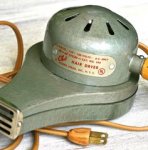A newish tenant texts me to say she keeps blowing her circuit breaker. Now, this is an old unrenovated apartment with 15A only circuits. And she's got an 1875W blow dryer! That's over 15A no matter how you slice it, and as I understand code, you shouldn't have a device pulling a steady load over 80% of circuit rating, right? The 1875W rating seems expressly designed to keep just under 80% of 20A.
I've told her she needs to get a 1200w blow dryer. But my question is: how is this hazard even possible, isn't this the reason 20A receptacles and plugs exist, to keep this from happening? Why does the 1875W device not have a 20A plug that won't go in a 15A receptacle? Even if I had a 20A bath receptacle circuit, it would have made no difference, she was doing her hair in the bedroom!

